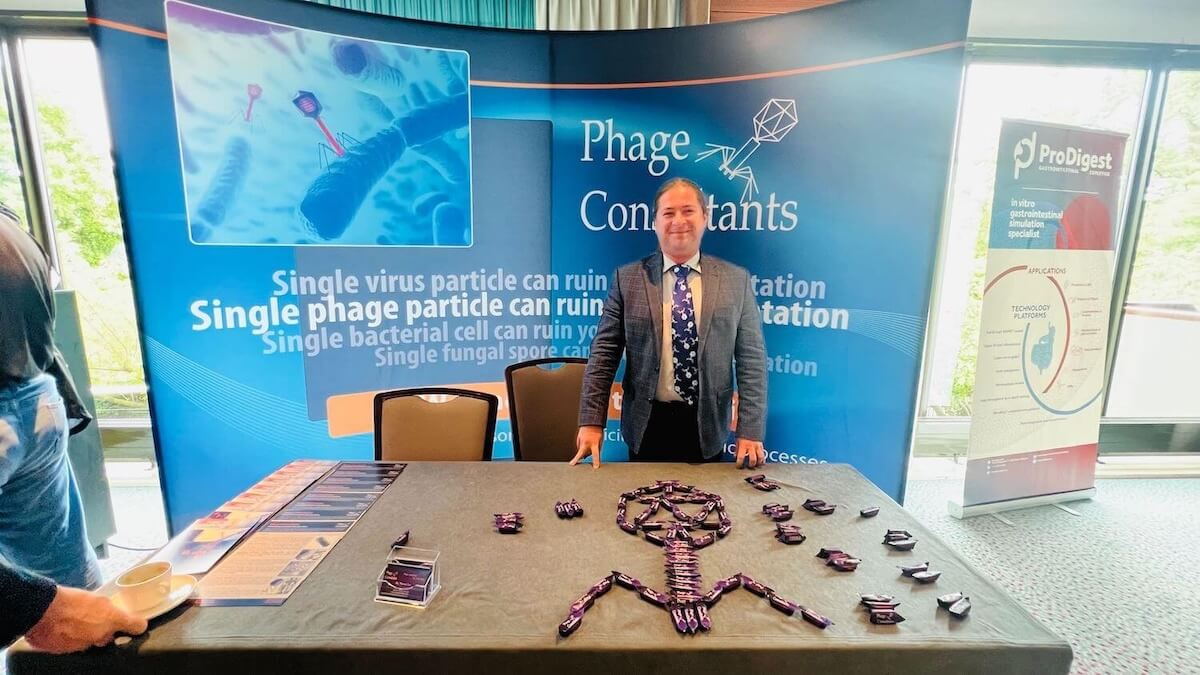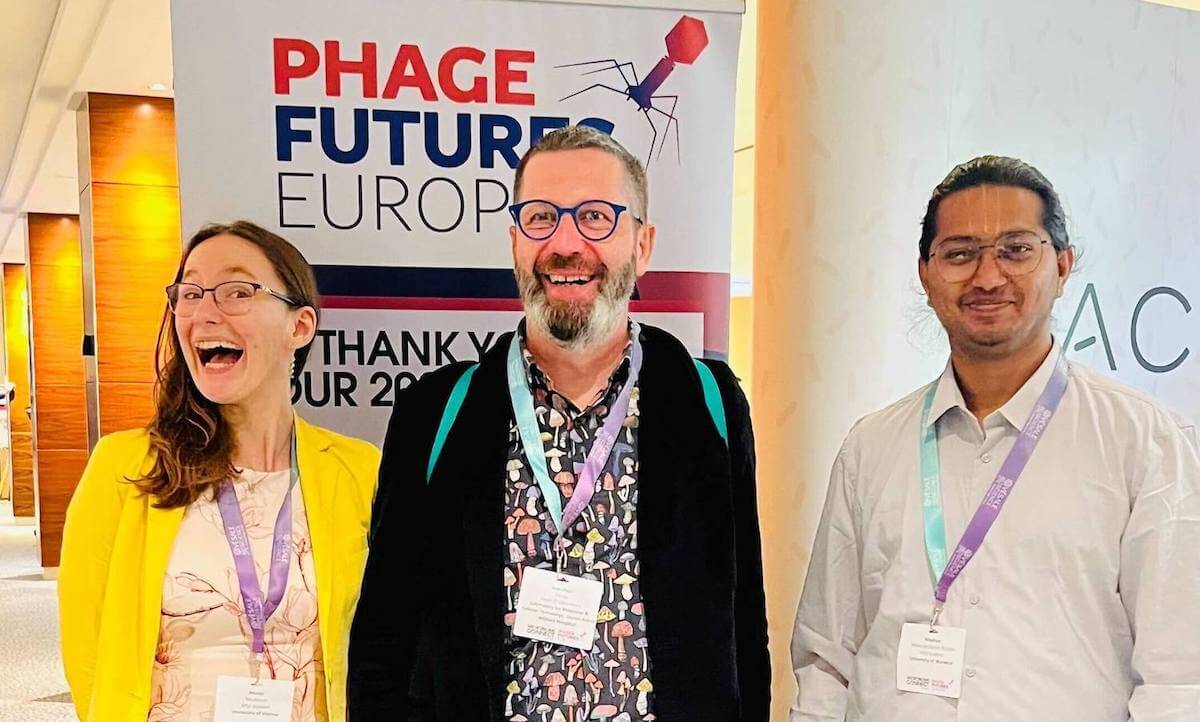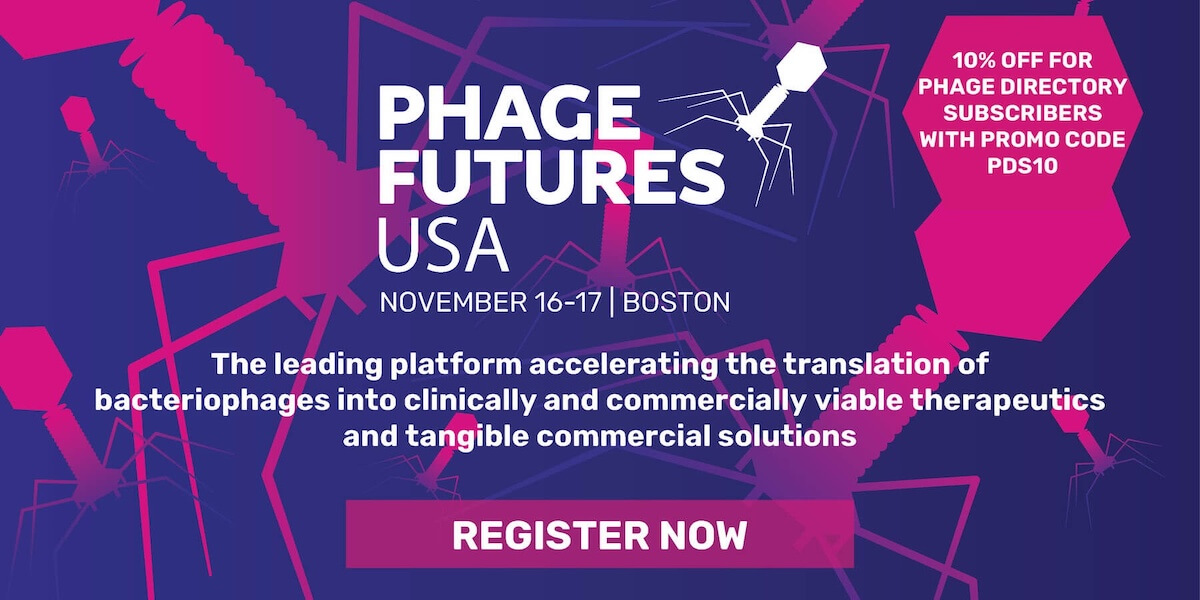The 6th annual Phage Futures conference was held on the 6th and 7th July 2022 in Amsterdam, The Netherlands, hosted by Kisaco Research. This was an exciting showcase of the ways phage translation into clinically viable solutions is being pursued around the world. The event partners were Cellexus, Vésale Bioscience and Jafral.
For this piece, we highlight some of our favourite talks from day 2 of the event:
In case you missed it, read our recap of day 1 here!
Cara Fiore, Food and Drug Administration
After the opening remarks, day two was kicked off by Cara Fiore, a Senior Regulatory Reviewer and Microbiologist at the Division of Vaccines and Related Product Applications, Center for Biologics Evaluation and Research, FDA, where phages are evaluated. She talked about the “Development and the use of bacteriophage therapy in a clinical trial in the US”. She briefed about the regulatory guidelines for Investigational New Drug Applications submissions, consideration to support licensure, and expanded access (compassionate use). Phages used to treat infections are considered Biological Products by the FDA.
When working with the FDA, it is paramount to deliver as much detail about your work as possible while still being concise. One should also consider the advice and help given during the various stages of the process, especially the pre-IND meeting, to ensure the development of the product goes as smoothly as possible.
She listed the most common pitfalls of phage IND submission: appropriate screening of subjects for inclusion or exclusion, pausing rules, adverse events and severe adverse events, insufficient manufacturing details and insufficient analysis (genomics).
Tobi Nagel, Phages for Global Health
Tobi Nagel is a Founder & President of Phages for Global Health; she spoke on “Empowering phage product development in Africa & Asia”. As founder of Phages for Global Health, she has conducted several phage workshops in Africa and Asia, teaching enthusiastic clinicians and scientists how to isolate, classify and apply phages. We all know about the advantages of phage therapy, especially against bacteria with antibiotic resistance; phages are specific, have low inherent toxicity, and are self-replicating. The comparative ease of development makes them particularly attractive for the African and Asian continents. Unlike classical antibiotics, which are usually produced in Europe or North America, phages don’t necessarily require overly specialized production facilities. This allows countries to build their phage cocktails instead of importing medicine abroad. While individualized phage therapy is most likely still out of reach, generalized phage cocktails against “classical” infections could be produced and administered using a regulatory framework from Europe or North America.
She briefed us about the global economics and the recent bankruptcy of antibiotic companies. She expressed the need for a subscription-type model in the UK and stressed the implementation of the PASTEUR ACT in the USA. She further explained the technical difficulties concerning antibiotic companies, such as difficulty making a new class of antibiotics, making new ones without significant side effects, and developing drugs in industrialized countries and distributing them to developing countries. Further, she suggested that phages are well suited for developing countries as they can be locally isolated with on-site equipment and are amenable to cultural acceptance. There is a need for scientific capacity building and establishing phage banks. She disclosed that 1200 scientists have already been trained in phage biology in Africa, and 60 phages have been isolated, with $945,000 raised in grants. She concluded that currently, in Kenya, decontamination in poultry using Campylobacter phages and Vibriophages for treatment of Cholera in DR Congo and Bangladesh is ongoing.

Marcin Los of Phage Consultants talks about how effective phages can be at messing with bacterial fermentations…
Christian Rohrig – Micreos, Ltd
Christian Rohrig from Micreos spoke about how their product, XZ 700, effectively and selectively kills S. aureus on skin. He briefed about the unmet medical needs of Atopic Dermatitis and the efficiency of peptidoglycan hydrolases such as endolysins to hydrolyze the cell wall. S. aureus can cause a myriad of troubles, one of which is atopic dermatitis. Unfortunately, antibiotics are only so helpful. They kill not only the disease-triggering pathogens but also the valuable commensals, in this case, Coagulase-negative staphylococci (CoNS), such as S. epidermidis, which protects the skin against S. aureus.
Their company has developed SA100, a chimeric endolysin combined with lysostaphin and ply 2638 from a Staphylococcus phage targeting S. aureus, which lyses within seconds. The XZ700 is an improved version of SA100 with a short linker, where the MIC of XZ700 is 2-16 times lower than SA100. He concluded that the activity of XZ700 had a host range of 120 clinical strains independent of drug resistance with no induced resistance and active even at 60°C.
Adam Ostrowski – Cellexus International
Adam Ostrowski is a Microbiologist and Technical Application Specialist at Cellexus International, and he spoke about the benefits of in-process parameter control in upscaled fermentation. Growing your phages can be tricky sometimes, especially if you want to do so in large quantities and under specific growth conditions. Luckily, Cellexus came up with a single use bioreactor solution. It consists of a single-use bag, ranging from 1.5-50 L (a 100 L bag will be made available in 2023), and all the sensors your heart desires. The bioreactor can monitor temperature, oxygenation, pH, agitation, and cell density. One of the significant advantages is that the bioreactor does not use mechanical stirring; instead, the bacteria travel on air bubbles. A highlight of this is that you can choose the colour of light emitted according to your needs and mood. He explained the flask vs bioreaction condition and the parameters such as temperature, aeration, humidity, % of CO2, anaerobic environment and overall control of the environment. He explained the Regular and Plus bioreactor model of Cellexus and the Optura spy for measuring the OD of the culture.
Nancy Tawil, Phagelux
Phagelux presented their lead product Bactelide, a spray specifically created to prevent AMR infection in pressure wounds, such as bed sores. It consists of 14 lytic phages against S. aureus and P. aeruginosa. The phages can travel deep into the skin through a unique design and reach their target pathogens. As of now, no toxicity effects have be seen in rats.
Minmin Yen, PhagePro Inc
Cholera is still a big problem in many countries. Infection can easily transmit in a household, leading to serious health issues and even death. One of the issues with medicines and vaccines against diseases such as cholera is that often cold chains are required. This cannot always be achieved. PhagePro aims to make a three-phage cocktail available as an orally administered tablet to disrupt transmission within a household.

A group of phage enthusiasts meets for much-deserved beers and food after the event!
Pantelis Katharios, Institute of Marine Biology, Biotechnology and Aquaculture of the Hellenic Centre for Marine Research
Besides clinical settings, phage therapy can also be utilized in food production. Using phages to decontaminate feed and even treat fish larvae challenged with Vibrio harveyi VH2 was successful in small-scale experiments. Yet, there are still many challenges ahead. Juvenile fish in hatcheries are susceptible to infections by various Vibrio species, which they often pick up from their live feed. Different strains of bacteria can cause the same or similar disease in fish, so a broad range phage or a phage cocktail is needed. Additionally, endotoxins released after lysis are, in some cases, equally toxic for the fish as the infection would be.
Matthew Tebeau, Proteon Pharmaceuticals SA
Regarding phage treatment in food production, Proteon Pharmaceuticals uses phages to modulate the microbiome in animals. Instead of using phages at the end of the infection chain, after conventional antibiotics have failed, they aim to disrupt this chain at an earlier point. Here they highlighted that the benefits of phages need to be communicated better to the public to raise awareness and acceptance.
Felipe Molina, University of Extremadura
You can’t resist a good cheese if you are anything like me. Sadly, sometimes bacteria interfere with the cheese-making process. Lucky for all cheese-lovers, phages are here to help. To predict which phages are the best for the job, Dr. Molina and his colleagues have developed a program that indicates which combination of phages makes the perfect cocktail.
Džiuginta Jasinskytė, SNIPR Bio
The CRISPR-Cas system holds many promises for the future of science and medicine. One of which comes in an excellent little phage package. SNIPR Bio constructed CRISPR-armed phages (CAP) to deliver an E. coli-specific CRISPR-RNA into the targeted E. coli strain. Inside the cell, it forms a complex with the pre-existing Cas nuclease. The Cas-RNA complex induces double-strand breaks, which ultimately leads to cell death. A cocktail of four different phages with the same CRISPR targets can target 90% of E. coli strains.
Concluding remarks
It was an exciting two days in Amsterdam with good food and even better company. Now the only question remaining is… how much is a flight to Boston for the Phage Futures Congress in November?









